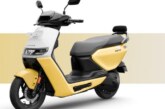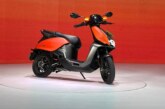
Know your electric car-detailed explanation of its components
Electric cars are becoming popular everywhere due to the high increase in fuel pricing. Currently, in India there are three models available to the customers are Tata Tigor EV, Hyundai Kona and the Mahindra’s eVerito. Know your electric car-detailed explanation of its components
Basically the electric-powered car has three primary components such as the electric engine, motor, controller and battery. It also has some other components such as charge port, DC/DC converter, onboard charger, a thermal system for cooling, transmission.
Have you ever thought about how does an electric car works?
What is an electric car?
Electric cars look like normal cars only when you see it from outside but if you go inside it, start driving it you can feel the car is quiet and you can observe the difference of the speed.
An electric car is an automobile that propels by one or more electric motors with the help of the energy which is stored in the rechargeable batteries.
If we say in simple words:
- The gasoline engine is replaced by an electric motor.
- The controller is the power source for the electric motor and
- The controller gets its power from an array of rechargeable batteries.
The main four components of an electric car are
- Batteries
- Controller
- Motor and Regeneration
- Charging
So, let us talk about them one by one.
Battery
In an electric vehicle, the auxiliary battery provides electricity to power the vehicle. This is something similar to our mobile phones or laptops. The energy is filled in the lithium-ion batteries like how we charge our mobile phones and laptops, here the difference is just that the battery size will be bigger.
The electric vehicles use the electricity stored in a battery pack to power an electric motor and turn the wheels. When the batteries finish the charge, it is again charged using grid electricity or it can be charged from a wall socket or charging stations.
Types of batteries used in EVs
There are many types of batteries used in EVs but the most commonly used batteries are lithium-ion and lead-acid. In electric three-wheelers lead-acid is most commonly used and li-ion batteries are used mostly in electric two-wheelers and electric cars. But three-wheelers these days are also coming up with the Li-ion batteries because of its great performance.
But if you compare both the batteries lithium-ion batteries perform best and give a high range, Li-ion batteries are lighter than lead-acid and nickel-metal, however, it is also expensive.
There are also Nickel Metal Hydride Batteries apart from Li-ion and lead-acid batteries. This also provides higher output and better performance but this too costs more than the lead-acid batteries.
Tata Tigor EV, Hyundai Kona, eVerito battery packs
- The electric car in India, Tata Tigor EV uses a 21.5 kWh battery pack.
- Mahindra eVerito uses a 72 V Li-ion battery.
- Hyundai Kona comes in two battery variants- 39kWh and 64kWh.
Panasonic largest producer of Li-ion
The largest producer of lithium-ion batteries for electric mobility is Panasonic at 23 GWh as of 2019. After that, the Contemporary Amperex Technology (CATL) with a capacity of 12 GWh and BYD CATL produced 11.8 GWh of battery capacity in 2017. Japan’s Panasonic is the second largest manufacturer with 10 GWh and BYD was third with 7.2 GWh.
Electric vehicles lifespan of batteries
When an electric vehicle’s battery is used, discharged and then recharged it affects the life of the battery. Almost all EVs batteries are warrantied for at least 8 years and 100,000 miles.
Controller
Controller monitors and helps in performance indications such as vehicle operator, motor, battery, and accelerator pedal. It will have a microprocessor that limits or redirects the current.
It intelligently turns the electricity on and off around 15,000 times per second, depending on the throttle position. In simple words, it regulates how much the electricity should pass. It acts as the floodgate between the motor and the batteries.
Motor and Regeneration
The motor is used to convert electric energy into kinetic energy and in most cars, the regeneration can be called “regenerative braking”, which recovers the energy and puts it back into the battery which you usually waste to slow down the vehicle. Recharges your batteries when you are not on the gas.
There are many types of motors but in that, there are 5 different types of motors used widely and currently, most EVs manufacturers use BLDC motors, Induction, SRM, Permanent magnet motors.
Different types of electric vehicles motors
- Permanent Magnet Synchronous Motor(PMSM),
- Brushless DC Motor(BLDCM),
- AC Induction Motor(ACIM),
- Permanent Magnet Switched Reluctance Motor(PMSRM)
- Interior Permanent Magnet Motor(IPMM)
Tata Tigor EV, Hyundai Kona, eVerito Motor
- Tata Tigor EV has 72 V 3-Phase AC Induction Motor.
- eVerito works with a 31 kW 3-phase AC induction motor.
- The Hyundai Kona electric SUV works with a 100 kW permanent-magnet synchronous motor.
Charging
Electric cars need to be recharged as any other vehicles need to be filled up by fuels. For charging an electric vehicle you can use your normal wall socket or at charging stations.
You can charge an EV either at home, work or at some EV public charging stations or points. There are different types of charging stations, they are Rapid, Fast and Slow.
- Rapid,
- Fast,
- Slow.
For any promotions and advertisements on electricvehicles.in, please send an email to support@electricvehicles.in
For the latest electric vehicles news, followelectricvehicles.in on Twitter, Instagram, Facebook and subscribe to our YouTube Channels-English, Hindi & Telugu







